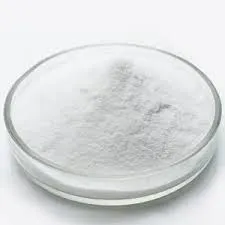
Aug . 14, 2024 10:16 Back to list
Innovative Approaches to Synthesize HPMC for Diverse Applications in Pharmaceutical Industry
Synthesis of HPMC A Comprehensive Overview
Hydroxypropyl Methylcellulose (HPMC) is a widely used non-ionic cellulose ether derived from the natural polymer cellulose. Its unique properties make it an essential ingredient in various industries, including pharmaceuticals, food, cosmetics, and construction. The synthesis of HPMC involves a series of chemical reactions that modify the cellulose structure, ultimately producing a versatile material with desirable functional characteristics.
The Starting Material Cellulose
The synthesis of HPMC begins with cellulose, which is typically extracted from plant fibers such as wood or cotton. Cellulose is a linear polymer made up of glucose units linked by β-1,4-glycosidic bonds. Due to its natural origin, cellulose is abundant and renewable, making it an environmentally friendly choice for many applications. However, raw cellulose is insoluble in water, necessitating modifications to enhance its solubility and functionality.
The Synthesis Process
The synthesis of HPMC comprises three primary steps alkylation, propylene oxide treatment, and the removal of residual reactants.
1. Alkylation The cellulose is first treated with methyl chloride or methyl bromide in the presence of a base, typically sodium hydroxide. This step introduces methyl groups to the cellulose backbone, thus yielding methylcellulose. The extent of methyl substitution can be controlled by adjusting the reaction conditions such as time, temperature, and concentration of reagents. The degree of substitution (DS) is a critical parameter that dictates the solubility and other properties of the resulting HPMC.
2. Hydroxypropylation The next step involves reacting the methylated cellulose with propylene oxide. This reaction introduces hydroxypropyl groups into the cellulose structure, enhancing the hydrophilicity of the polymer. The hydroxypropylation process is typically conducted under alkaline conditions and requires careful control of the reaction parameters to achieve the desired degree of substitution. The combination of both methyl and hydroxypropyl groups accounts for the unique properties of HPMC, including its water retention and film-forming capabilities.
hpmc synthesis

3. Purification After synthesis, the resultant HPMC undergoes purification to remove unreacted chemicals and by-products. This is often accomplished through a series of washing and filtration processes. The final product is then dried and milled to obtain the desired powder consistency.
Properties and Applications
HPMC is renowned for its water solubility, thickening, film-forming, and stabilizing properties. These characteristics make it suitable for a vast range of applications.
- Pharmaceuticals In the pharmaceutical industry, HPMC serves as a binder and thickener in tablets and capsules. Its ability to form gels also makes it an excellent candidate for controlled-release formulations. - Food Industry HPMC is commonly used as a food additive and thickening agent, providing texture to sauces, dressings, and baked goods. Its emulsifying properties help stabilize emulsions, preventing ingredient separation.
- Cosmetics As a thickener and film-forming agent, HPMC finds application in lotions, creams, and various skin-care products, enhancing product stability and texture.
- Construction In the construction industry, HPMC is used in cement-based products, improving their workability and adhesion properties.
Conclusion
The synthesis of Hydroxypropyl Methylcellulose is a well-established process that transforms natural cellulose into a versatile polymer with a wide range of applications. Its unique properties make HPMC invaluable across several industries, from pharmaceuticals to construction. As research continues to explore new areas of application and further refinements in synthesis techniques, HPMC is poised to maintain its importance in both existing and emerging markets.
-
Unlocking the Benefits of HPMC Products: A Gateway to Versatile Applications
NewsAug.07,2025
-
Unleashing the Potential of HPMC Ashland: A Comprehensive Look
NewsAug.07,2025
-
Tile Bonding Cellulose: The Key to Superior Adhesion and Durability
NewsAug.07,2025
-
Hydroxypropyl Methylcellulose Powder: The Versatile Component in Modern Pharmaceuticals
NewsAug.07,2025
-
Hydroxyethyl Cellulose: The Versatile Solution for Various Industries
NewsAug.07,2025
-
Hydroxyethyl Cellulose (HEC): The Versatile Polymer for Various Applications
NewsAug.07,2025







